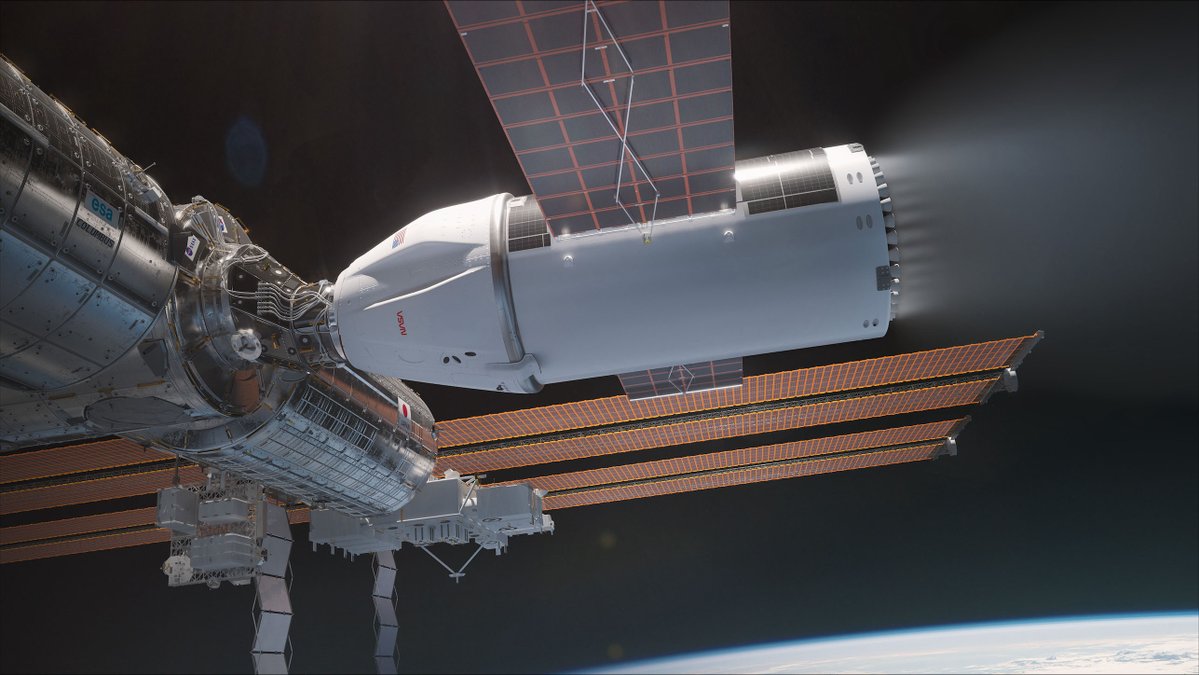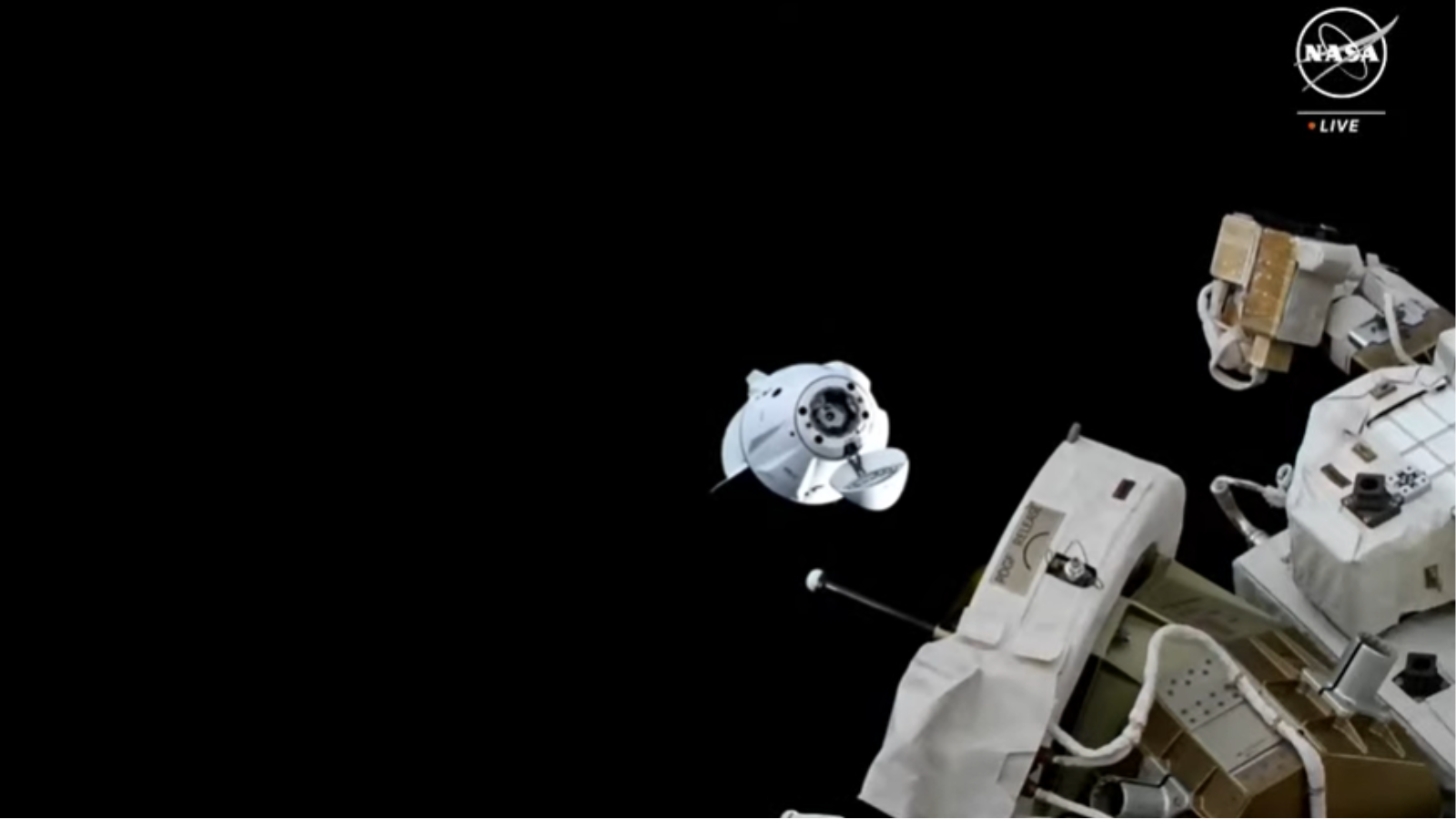
SpaceX's new vehicle to bring down the International Space Station will be a monster.
The SpaceX deorbit vehicle, a variant of its workhorse Dragon spacecraft, will carry 46 Draco thrusters to send the International Space Station (ISS) to its end in the south Pacific Ocean in the next decade, the company said in remarks last week. That's triple the usual 16 on board Cargo Dragon missions to the ISS, according to SpaceX.
"The vehicle design will build upon SpaceX's Dragon cargo spacecraft, with an enhanced trunk section that will host propellant tanks, engines, avionics, power generation and thermal hardware tailored to complete this mission," Sarah Walker, SpaceX's director of Dragon mission management, said in a July 17 press conference.
While the ISS remains in good health, NASA is already planning for the end. Early-stage funding of new commercial space stations aims to have them take over the ISS role of fostering low-Earth research, and hosting astronauts. When that happens is still in flux; while most of the ISS consortium is prepared to go until 2030, the agency has emphasized it will only deorbit the six-bedroom complex when the commercial successors are ready.
Earlier this year, NASA awarded SpaceX a $843 million contract to build the Dragon deorbit vehicle to send the ISS to its doom.
Related: ISS could 'drift down' for a year before SpaceX vehicle destroys it
Cargo Dragon has been flying uncrewed ISS resupply missions since 2012, while Crew Dragon has been sending astronauts to space since 2020. It's no accident that SpaceX plans its new vehicle based on these.
"One of the benefits of leveraging Dragon's rich flight history is that we can continue to use NASA-certified hardware for a number of the key systems, like the docking system and propulsion system components," Walker said.
The ISS is expected to gradually fall back to Earth for about 12 to 18 months before the final deorbit burn is ordered, so that it is closer to our planet. The vehicle will fire between 22 and 26 engines at the same time, Walker said. The contract calls for a speed of roughly 57 meters per second (187 feet per second). That's just over 127 mph (205 kph).
Providing that kind of impulse will take a larger Dragon, a one-off designed especially for this unique mission. The trunk section that provides propulsion, electricity and other vital items will be twice as large alone as a standard cargo Dragon trunk, Walker said. "This vehicle is needing a ton of propellant, a ton of engines to provide a lot of thrust to push the ISS," she said.
"There's also a number of complexities that come with actually pulling off a mission like this," Walker said. "One example is … it has to be continuing to operate in a different environment than we're used to: operating while pushing ISS with all of its appendages, right when they are having increasing drag on them [due to Earth's atmosphere]. And those cannot stop it from its mission of getting it to the target location."
While NASA is responsible for the U.S. segment of the ISS, ultimately each of the participating space agencies takes responsibility for its own portion of the orbiting complex, Weigel said. The other major modules come from Roscosmos, the European Space Agency and the Japanese Aerospace Exploration Agency while the Canadian Space Agency has robotics.
Related: NASA, SpaceX look to extend lifespan of Crew Dragon spacecraft

The south Pacific Ocean is one of the prime locations for the ISS modules SpaceX will deorbit, although NASA has not yet decided exactly where the complex will come down. Most of the chunks should safely burn up in Earth's atmosphere, and there are no plans as of yet to do a salvage mission — which would be expensive — to see if there are any items to retrieve for a museum. (NASA and other participating space agencies will pull out things they want to preserve ahead of reentry.)
"We've asked for the U.S. deorbit vehicle to put us in a very, very tight debris footprint," said Dana Weigel, NASA's ISS program manager, in the same press conference. The goal is to distribute the debris over a narrow path of no more than 1,250 miles (2,000 kilometers), using the "very large thrust, and a very hefty burn" that SpaceX's vehicle will provide.
What survives reentry will highly depend on its construction, but agency calculations suggest pieces will range in size from household microwave ovens to typical sedans. "Some things will completely burn up, like the solar arrays," Weigel added. "Other very dense structures — or structures that are kind of buried under structures — can survive."
The timing of the historic burn is expected around January 2031, when the 11-year solar cycle should be at a lull and the Earth's atmosphere at a minimum of "puffing up" due to the sun's activity. "Of course," Weigel noted, "the environment and the behavior of the solar cycle is something that we would watch and adjust dates [for] as we get closer."





!["[T]he First and Fifth Amendments Require ICE to Provide Information About the Whereabouts of a Detained Person"](https://images.inkl.com/s3/publisher/cover/212/reason-cover.png?w=600)

